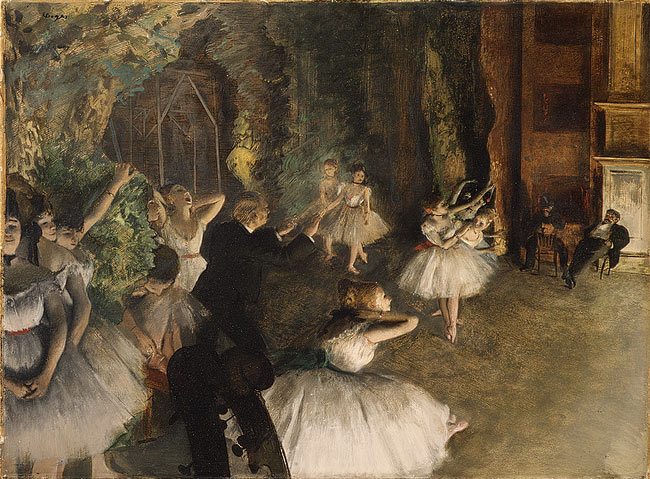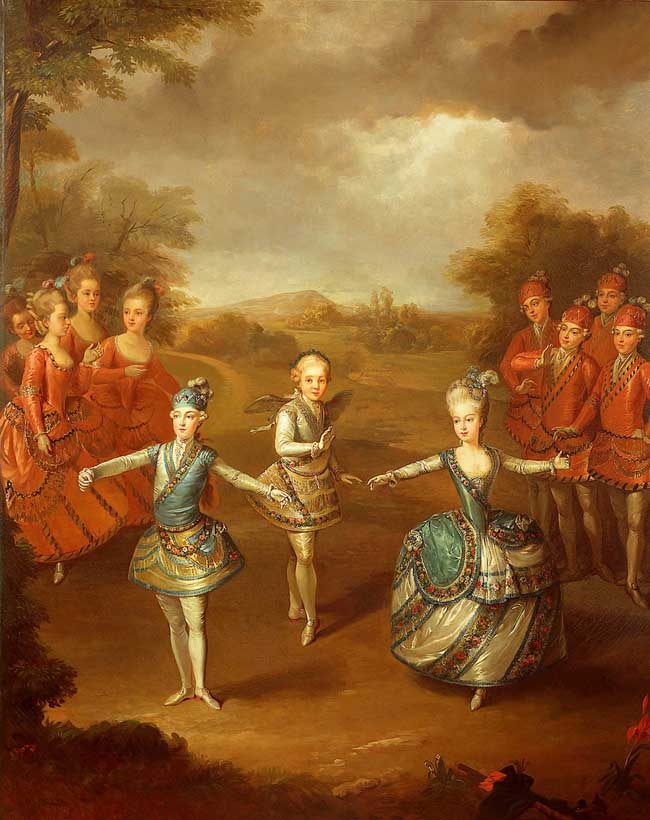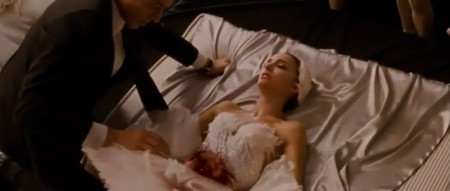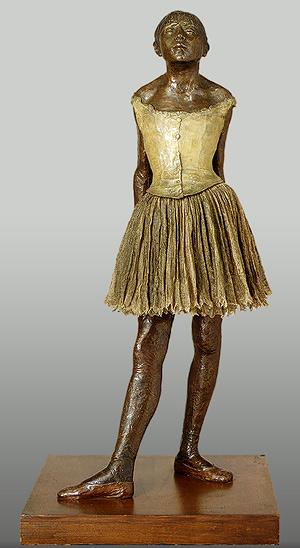Nice bodies and gracious gestures.Under the Nazis, Goebbels, after slow dancing around the issue for years, finished by banning ballet; dance became a diversion and no longer an artistic category; a joy of life and pleasure of the senses with the institution of ballet as an art form dismantled. It seemed impossible to divest ballet from what was seen as its Slavic and romance origins, the unfathomable black swans lurking in the wings. The inability to separate the “dybbuk” from the dance, those unsettled spirits and unblessed sexual energies. It was too risky to chance dead lovers returning returning as a dybbuk and taking possession of a dancer’s body.

Degas. ---With regard to their gestures, what interested him most was what they did more or less subconsciously when they were not playing to the public. Degas paintings are full of women combing, washing and dressing themselves - automatically, as it were. "Up until now, the portrayal of nudidity has always presupposed exposure to the public eye", he wrote, "but the women in my paintings are simple, good people, thinking of nothing and preoccupied with nothing but their own bodies"; it was "like looking through a keyhole." On another occasion he referred to them as "animals in the act of washing themselves". In the The Rehearsal on the Stage, too, the girls stand or sit about quite unself-con-sciously: yawning, scratching, stretching, utterly self-absorbed and attending to their own needs. There was a grace here which fascinated Degas. It was a quality he found in dancers who were resting between scenes, but also - on few and fortunate occasions, and with a different level of intensity - in those who were actually dancing: it was not the natural grace of a woman which interested him then, but a grace she had acquired by dint of artistry, the grace of a ballerina who is entirely engrossed in her art.---Read More:http://www.all-art.org/history480-5.html image:http://www.metmuseum.org/toah/works-of-art/29.160.26
Everyone carries a Shadow, and the less it is embodied in the individual’s conscious life, the blacker and denser it is.
– Carl Jung, “Psychology and Religion,” Terry Lectures, Yale University, 1937-38
Soon after the film “Black Swan” begins, we find ourselves on a ballet stage, engaged by a scene that represents the central struggle of this ultimately tragic drama. The lead ballerina is in a dance of combat with a gigantic feathered beast. She’s wrestling with demons, and she will continue to do so throughout this riveting movie. It does recall the idea of the ballet “The Dybbuk” first dreamed up by Bernstein and Robbins in 1944 where the mystical and the kaballistic possess the lead, encouraging belief of the dance being linked to an alternative reality…
…The legendary Count of Saint Germain, described as an alchemist, spy, industrialist, diplomat and Rosicrucian, became involved in several political intrigues in Russia and was, according Nicholas Roerich, “a member of the Himalayan brotherhood.” In 1755 he traveled throughout Eurasia to study occult teachings, and may even have visited Tibet. It is said that while studying occultism in Central Asia the Count was introduced to the secret rites of Tantric sex magic which provided him with a technique to prolong his youth. He also engaged in spying operations against the notorious British India Company. Saint Germain founded two secret societies called the Asiatic Brethren and the Knights of Light. As early as 1780 he warned Marie Antoinette that the French throne was in danger from an international conspiracy of ‘Brothers of the Shadow’. Rumours continued to circulate for many years after his alleged death that Saint Germain was still alive working behind the scenes in European politics or studying occult doctrines in Central Asia. Read More:http://www.redicecreations.com/specialreports/2005/11nov/secreteurasia.html …

Johann Georg Weickert, Marie Antoinette and Family Dancing, 1765 Read More:http://georgianaduchessofdevonshire.blogspot.com/2010/02/just-dance.html
In Black Swan, Through Nina’s metamorphosis from a shy nobody to a possessed superstar, the viewers experience the dark side of entertainment. Mind control, manipulation and immorality collide with success and recognition. Dark impulses, addictions and self-destruction arise with artistic genius and creative brilliance. Those who are “running the show” know how to bring the Black Swan out of up-and-coming artists … and they know very well it will destroy them in the long run. And they are OK with that. The same way Beth was pushed aside to welcome a new Swan Queen, the public will always welcome the elite’s newest star with applause and acclaim. Because, as they say, the show must go on. Read More:http://vigilantcitizen.com/moviesandtv/the-occult-interpretation-of-the-movie-black-swan-and-its-message-on-show-business/

---The process, however,consumed her. By allowing the Black Swan to completely possess her, Nina gave the performance of a lifetime, but she has become a different person. Thomas and the audiences are in love with Nina as the Black Swan – the same way the prince of the ballet falls in love with the White Swan’s evil twin. But this is not the “real” Nina. The Black Swan is a destructive force she cannot live with: it is tormenting her on a physical and psychological level. Not able to go on, the only way Nina can free herself, is by killing herself. And this is what she does.--- Read More:http://vigilantcitizen.com/moviesandtv/the-occult-interpretation-of-the-movie-black-swan-and-its-message-on-show-business/
So, dance has always had this other-wordly seam; rooted as it appears in ancient ritual: interlocking layers of existence, obsession, heat and wrath, phosphorescent possession; and the burnished curves and serpentine forms that create an in-between world. A world of dusk and dawn, but not daylight, lyrically somewhere that is nowhere and a nowhere that might be everywhere.

Degas. ---The model for this essentially realistic work is known to have been Marie Van Goethem. Born on June 7, 1865, she was a student at the École de Danse in Paris, and by 1880 she had been engaged as a dancer at the Opéra. The care with which Degas observed his model is reflected not only in the sculpture itself, but also in the unusual number of surviving sketches of the model in charcoal and pastel, as well as in a preparatory sculptural study of the figure in the nude. The title, The Little Fourteen-Year-Old Dancer (Petite danseuse de qu
ze ans), given to the original mixed-media sculpture when it was exhibited by Degas in the sixth Impressionist exhibition held in Paris in 1881, provides the most solid evidence for the sculpture's date. Source: Edgar Degas: The Little Fourteen-Year-Old Dancer (29.100.370) | Heilbrunn Timeline of Art History | The Metropolitan Museum of Art----
But Goebbels, and aside from the Eastern body language of ballet, inextricable as it appeared; he did base his decision on placing dance within the “entertainment” complex, as in cabaret or revue dancing based on the prevalent French model that had developed since Degas’s time:
Understandably, few male spectators showed signs of outrage. Unlike women and girls, men were given more or less free rein to seek gratification for their erotic urges. For them, ballet took on a new meaning, and the pronounced tendency among 19th-century choreographers to bring ballerinas up to the footlights more frequently than their male colleagues surely cannot be ascribed solely to the artistic gain derived from the introduction of the toe dance.
The ladies in the boxes may occasionally have been consoled by the knowledge that their stage rivals were deemed unmarriage-able. From low-class backgrounds, with perhaps a laundress or seamstress as a mother, they were as likely as not to have grown up in a one-room flat at the back of some dingy close. The theatre offered one of the few opportunities to escape a life of poverty and misery. With luck, they would be accepted, at the age of eight or nine, into the Opera dance school, the Academic Royale. They made their first stage appearance at the age of 14 or 15, and retired 20 years later. Though a girl of mediocre talent might never be more than an ordinary dancer in the corps de ballet, earning no more on stage than she would as a seamstress, she nonetheless had a better chance as a ballerina of attracting the attentions of a wealthy gentleman. She was in dire need of his self-centred favours if she were to escape from hunger and her dingy close. Apart from anything else, male patronage could be advantageous in determining the outcome of professional rivalry between dancers. Read More:http://www.all-art.org/history480-5.html
ADDENDUM:
Ansky’s religious ghost story, which premiered upon his death in 1920, turns on the Kabbalah, ancient Jewish texts of ominous power. The playwright himself described The Dybbuk as a “realistic play about mystic people,” and the plot synopsis is almost choreographic: Leah and Chanon, a young theologian, are pledged in marriage, but Leah’s father breaks the pledge and deeds her to a wealthier suitor; Chanon invokes the Kabbalah and consumed by cosmic fire he dies, returns as a dybbuk, and takes possession of Leah’s body; the village elders exorcise this dybbuk, but Leah, not wanting to live without her true bridegroom, dies and joins him in oblivion. Star-crossed lovers, dark spells, two young people seeking peace as one—the standard fare of classical dance. As to who pitched the play on the Old Met stage, I would guess Robbins. But as is often the case with young people who share similar upbringings and obstacles and ambitions—who were born less than two months apart (like Leah and Chanon!) in the year 1918—they may both have said it at the same time: Dybbuk. Because despite that rush and flush of success, the world suddenly at their feet, these artists were a long way from fancy free. Read More:http://www.newcriterion.com/articles.cfm/the-haunting-3133








 COMMENTS
COMMENTS



